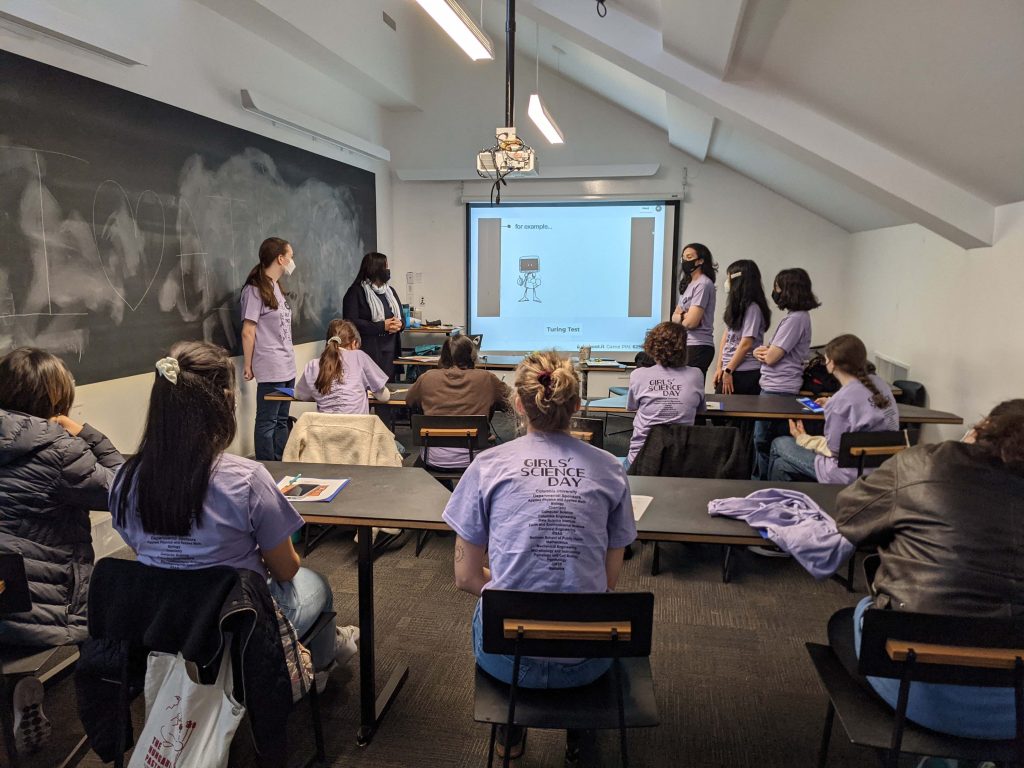Giving Girls the Gift of Science
Ansaf Salleb-Aouissi spent an afternoon with middle school girls to kickstart their interest in artificial intelligence through science-based activities.
It is one thing to study and learn about artificial intelligence in class and it is another to experience it and learn from doing it.
Girls’ Science Day was recently held and the day-long event introduced middle school girls to experiments and activities to show them how interesting and fun science can be for young women.
Ansaf Salleb-Aouissi knows how important it is to include women’s voices in science and research. She first became interested in computer science and coding when she was 14 after she joined an after-school program, near her house, and quickly realized that she would like to become a computer scientist. She achieved her dream when earned an engineering degree in computer science at the University Of Science And Technology Houari Boumediene (USTHB) in Algiers, Algeria, her home country.
Salleb-Aouissi was the only girl in the after-school computer science class, and later only a small number of women (less than 10 percent) of the class were women at her university.

As a mother of two middle-school-age daughters, she immediately volunteered to host two sessions to introduce artificial intelligence to students. Her projects in AI and education for pre-college students helped her prepare for the class. But this time around she tailored the lesson and broke down the concepts so that it would be easier for the teens to understand.
Nowadays, teens are immersed in AI, whether they know it or not, so showing them examples to explain the concepts was the perfect way of sparking interest and connecting science to their everyday lives.

Aside from gamifying the lesson with help of the online Kahoot platform, the students experienced training a model to identify objects. This is where the fun began, the students were tasked to teach the model how to identify the human body. To do this, they posed for the camera and had to think of different poses to help the model learn. A second experiment taught the model how to identify a purple pen and a green toy car. The students had to take pictures from various angles to be able to generalize and predict future images.
Once the model analyzed the photos it could easily identify the purple pen and could even identify a red and blue pen. The students were impressed by how the model worked well in identifying different objects from just a small set of sample photos.

Salleb-Aouissi joined the department in 2015 as a Senior Lecturer and does research in machine learning and medical informatics (e.g., prediction of premature birth), as well as building tools to help her students write proofs using propositional logic. This semester she is teaching discrete mathematics (COMS W3203) and is advising graduate and undergraduate students working on research projects.
Introduction to Artificial Intelligence and Kahoot materials by Ansaf Salleb-Aouissi, Uzay Macar, and Noah Mauchly (animator).

